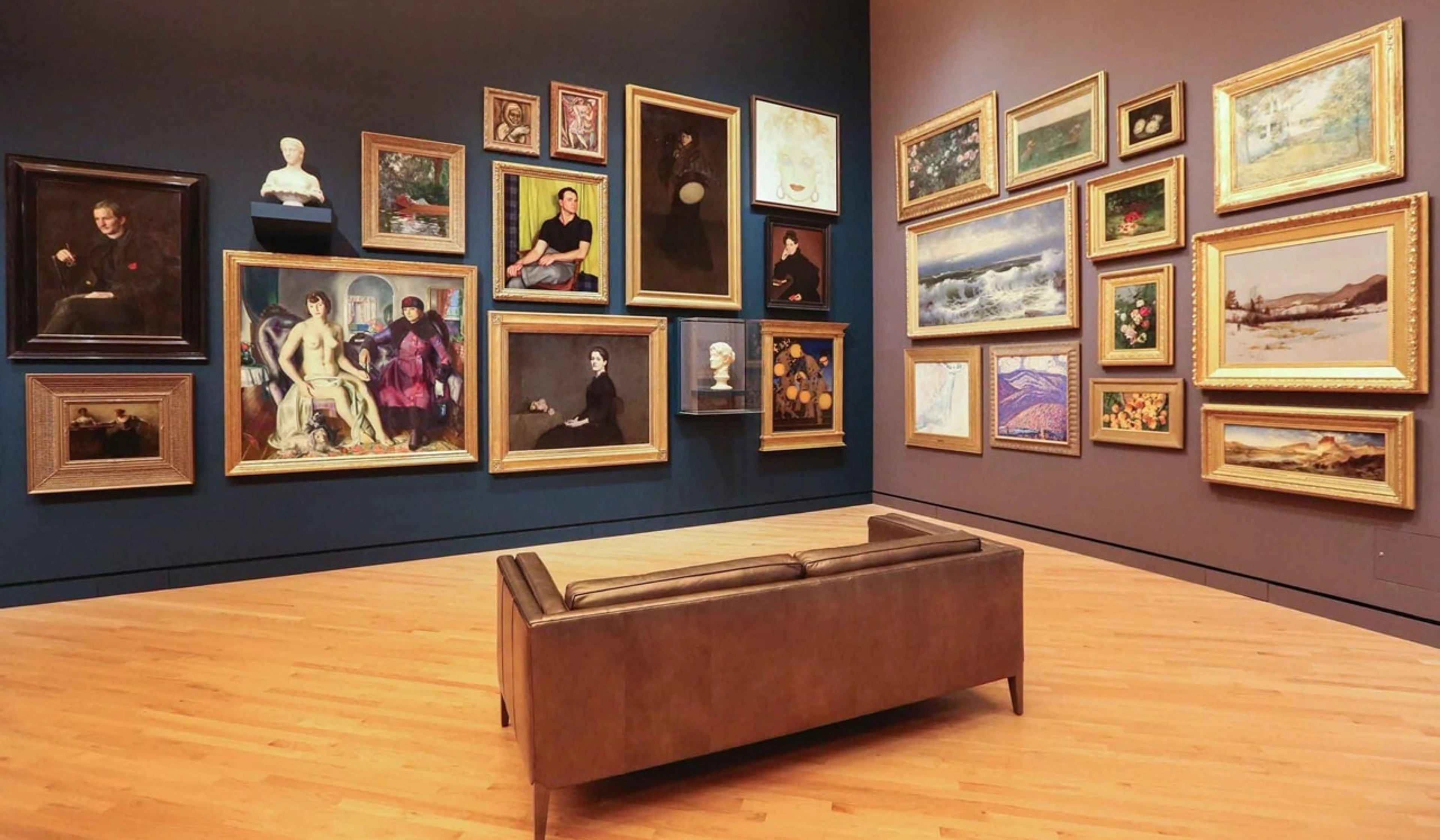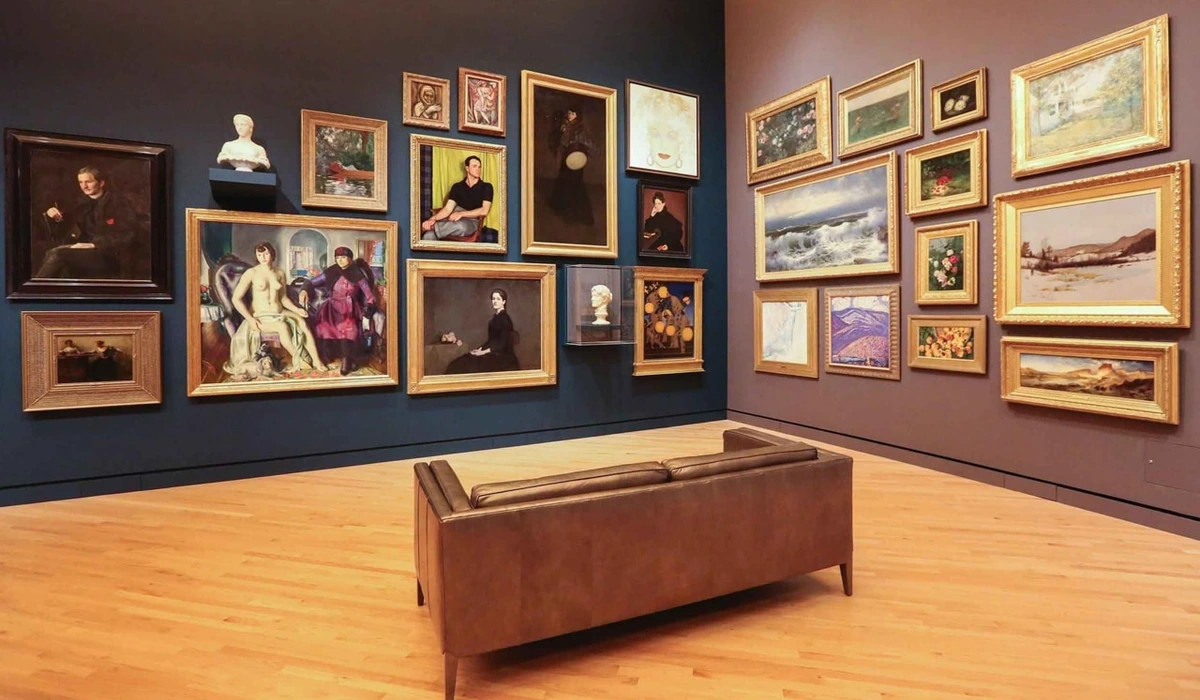
Abstract Artist's Journey: Selling Art Online & Digital Marketplaces
An abstract artist shares a candid, often humorous account of venturing beyond the easel to sell art online, detailing practical lessons, platform navigation, and the emotional journey of connecting with collectors digitally.
Beyond the Studio: My Personal Odyssey Through Online Art Marketplaces as an Abstract Artist
There's a certain magic to the studio, isn't there? It’s a sanctuary of canvas, color, and quiet contemplation, where the only demands are the ones you place on yourself. For an abstract artist like me, it's where the chaos of inspiration transforms into something tangible, something meaningful. But then comes the moment, often with a sigh and a lukewarm cup of tea, when you realize that the art, beautiful as it is, also needs to find its way out into the world. It needs a home, a wall, a collector. And that, my friends, is where the comforting solitude of the studio gives way to the exhilarating, sometimes bewildering, digital landscape of online art marketplaces.
For a long time, the idea of selling my abstract art online felt like trying to explain a dream in a spreadsheet – utterly counterintuitive. My art is about feeling, intuition, and a very personal dialogue between me and the canvas. How do you translate that to a scrollable image and a shopping cart button? This article isn't a definitive guide, but rather a frank, sometimes self-deprecating, account of my own winding path through this digital wilderness.

The Digital Wild West: Choosing a Platform
When I first decided to dip my toes into online sales, I felt like a prospector in the digital gold rush, armed with a paintbrush instead of a pickaxe. The sheer number of platforms was dizzying: Etsy, Saatchi Art, Artfinder, Artsy, independent websites… each promising a unique slice of the art market pie. It was less about which platform was objectively 'best' and more about finding a place that resonated with my art and my approach.
I spent countless hours researching, comparing, and overthinking (a classic artist trait, surely?). Should I go for the vast, accessible market of Etsy, known for handmade goods, or the more curated, fine-art focus of Saatchi? I've shared some of my thoughts on the direct comparison between these two in my article on navigating online art marketplaces: Etsy vs. Saatchi, but the truth is, the 'best' platform for you is the one that aligns with your artistic vision, your workflow, and your target audience. For me, that meant a blend of accessibility and a serious art-buyer audience.
Beyond the 'Add to Cart': The Nitty-Gritty of Listing
Once I'd chosen my initial battlegrounds (yes, 'battlegrounds' feels about right when you're wrestling with image sizes and SEO tags), the real work began. It wasn't just about uploading a pretty picture. It was about translating the essence of an abstract piece into data points. How do you convey the visceral emotion of a large canvas, or the subtle texture that changes with the light, through a JPEG?
The Art of Digital Presentation
Photography became my new obsession. A bad photo of an abstract painting is like a muffled whisper in a crowded room – nobody hears it. I learned about lighting (natural light is your friend!), staging (simple, clean backgrounds that don't compete with the art), and resolution (crisp, clear images are non-negotiable). For abstract work, close-ups showing texture or brushwork are crucial. It's about letting the collector feel the painting, even if they can't physically touch it.
![]()
Then came the descriptions. This was perhaps the most challenging part for an abstract artist. How do you describe something that's meant to evoke a feeling rather than illustrate a scene? I found success by focusing on:
- My process: What was I thinking or feeling when I created it?
- The materials: Acrylics, oils, mixed media – this provides concrete information.
- The emotional landscape: What emotions or ideas does it suggest? (Not dictate, but suggest.)
- Size and display: Practical details are vital. Will it fit above their sofa? How does it look framed?
And pricing? That's a whole other existential crisis. How do you put a number on something that comes from your soul? Researching comparable artists, considering material costs, and valuing my time helped. But it still feels a bit like throwing darts in the dark sometimes.
The Unexpected Connections: Navigating the Human Element
What surprised me most about selling online wasn't the technical hurdles, but the human connections. When you sell art in person, there's an immediate exchange of energy. Online, it's delayed, asynchronous, and yet, no less profound. Receiving an email from someone saying they bought your painting and it brought them joy – that's a feeling that transcends the digital divide.
But it's not all sunshine and five-star reviews. There are the frustrating inquiries, the low-ball offers, and the occasional silence after sending a detailed response. My timeline as an artist, as you can read at my artist's timeline, shows that rejection is part of the journey. What I learned is that every interaction, positive or negative, is an opportunity to learn and grow. It's about patience, clear communication, and remembering that behind every screen is another human being, possibly on their own journey to find something that resonates.

The Long Haul: Evolution and Self-Reflection
Selling art online isn't a 'set it and forget it' endeavor. It's a continuous evolution, a dance between creating in the quiet of my studio and adapting to the ever-changing rhythms of the digital world. I’ve refined my photography, streamlined my shipping processes (packaging abstract art for safe transit is an art in itself!), and become more adept at writing descriptions that capture the elusive essence of my work.
I've also realized the importance of diversifying. While marketplaces are great, having my own presence, a place where people can directly buy my art or learn more about my practice (perhaps even visit my museum in 's-Hertogenbosch if they're local!), offers a sense of control and a direct connection. Social media platforms, especially Instagram, have become unexpected galleries, allowing me to share snippets of my process and connect with a global audience.
This odyssey is far from over. Each sale, each inquiry, each piece of feedback adds another chapter to my story. The online marketplace, once a bewildering wilderness, has slowly transformed into a familiar landscape, still wild at times, but filled with pathways I've learned to navigate.
It's a journey of continuous learning, of balancing the solitude of creation with the demands of commerce, and ultimately, of finding homes for the pieces of my soul I pour onto canvas. And perhaps, that's the most beautiful part of this digital adventure – watching my art, born in quiet contemplation, find its loud, vibrant place in the world.




